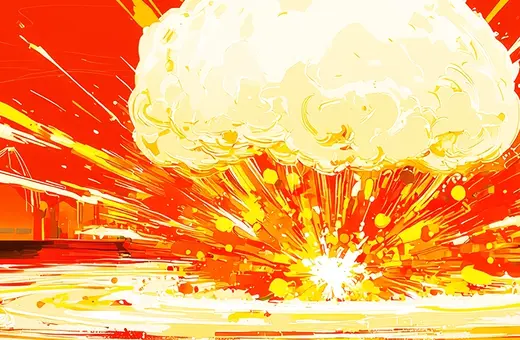There is an arguably bizarre theory in philosophy today—gaining momentum in both academia and popular culture—called ‘panpsychism’. It has many variants, but the most recognizable one posits that elementary subatomic particles—quarks, leptons, bosons—are conscious subjects in their own right. In other words, the idea is that there is something it feels like to be an electron, or a quark, or a Higgs boson; their experiential states are allegedly an irreducible property of the particles themselves, just like mass, charge or spin. According to this theory—which has been openly embraced by influential mainstream figures, including reductionist neuroscientist Christof Koch—our complex conscious inner life is constituted by an unfathomable combination of the experiential states of myriad particles forming our brain.
I understand the urge to circumvent the failures of mainstream materialism, according to which matter is all there truly is (experience being somehow an emergent epiphenomenon of certain ephemeral material arrangements). There is growing awareness in both science and philosophy that materialism is untenable, as I discussed in a previous article. The question is whether simply adding—next to mass, charge, spin—fundamental experiential properties to matter is a persuasive and legitimate way out, or just avoids the need for explanation.
I can accept that my cats are conscious, perhaps even the bacteria in my toilet. But I have a hard time imagining that a grain of salt contains a whole community of little conscious subjects.
You see, I can easily accept that my cats are conscious, perhaps even the bacteria in my toilet. But I have a hard time imagining—especially when I am eating—that a grain of salt contains a whole community of little conscious subjects. The panpsychist’s motivation for wanting even the humble electron to be conscious is to treat experiential states in a way analogous to how physical properties are treated in chemistry. As the physical properties of particles combine in atoms, molecules and aggregates to give rise to emergent macroscopic properties—such as the wetness of water—the panpsychist wants the experiential states of particles in our brain to combine and give rise to our integrated conscious inner life. The idea is to fold experience into the existing framework of scientific reduction and emergence. Therein resides most of the appeal and force of panpsychism.
To do so, the panpsychist takes subatomic particles to be discrete little bodies with defined spatial boundaries. This way, their respective experiential states are thought to be encompassed by such boundaries, just as our human experiences seem to be encompassed by our skull. Indeed, since each person’s consciousness does not float out into the world, but is personal in the sense that it is limited by the boundaries of the person’s body, so subatomic particles must be understood as discrete little bodies, each containing separate and independent subjectivities.
The panpsychist then posits that the inherent subjectivity of different particles can combine into compound subjects if and when the particles touch, bond or otherwise interact with one another in some undefined chemical manner. Notice that this approach makes sense only through analogy with physical properties. The mass of an electron is ‘held’ within the electron’s boundaries, therefore it’s only logical—the argument goes—that its experiential states should also unfold within the same boundaries. Or is it?















Join the conversation